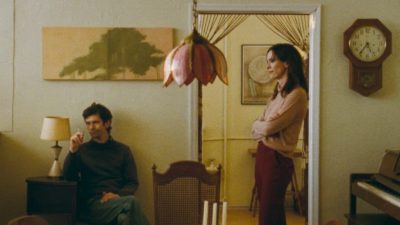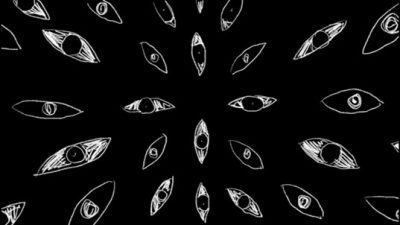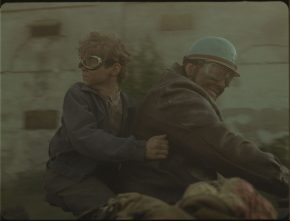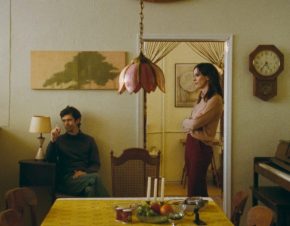As I navigated the bustling streets of Times Square, dodging selfie sticks and flashing billboards, I prepared myself for the Broadway premiere of The Hills of California. The iconic Broadhurst Theatre housed this latest, eighth play of Jess Butterworth, a Tony Award-winning playwright best known for Jerusalem and The Ferryman as well as masterful scripts like that of Edge of Tomorrow (I hope part two turns out to be more than just a rumour).
The play was directed by the Academy and Olivier Award-winning Sam Mendes, recognized for films such as 1917, American Beauty, Revolutionary Road, Skyfall, and Empire of Light. He founded and ran the Donmar Warehouse in London for a decade and his recent theater work includes The Motive and the Cue, The Lehman Trilogy, and The Ferryman on the West End and Broadway. Mendes was knighted in 2020.
Arriving a bit early, a sea of people already formed lines at the entrance—some excitedly chatting about the show, others glued to their phones or confused by which was the line to the new musical, Hell’s Kitchen and to The Hills of California. There was an energy in the air and a buzz of anticipation, especially common for preview nights like this.

(c) Dora Endre
A Parallel Journey Through Time
The story weaves two timelines: one in the 1950s, when the Webb sisters are still children, and another in 1976, when they reunite in their Blackpool family home, slash rundown seaside guest house, to say goodbye to their dying mother. Inspired by Butterworth’s own loss of his sister to brain cancer in 2012, the play is not an autobiographical tale, but rather an exploration of the emotional toll of sibling dynamics, lingering guilt, jealousy and trauma.
The Sea View Guest House (the song about the place might play in my head on repeat until the day I die) is a place haunted by nostalgic memories of early crushes, cigarettes smoked in hiding and endless hours spent rehearsing musical numbers. The Webb sisters—managed by their fiercely loving Mary Poppins-like single mother— rehearse their singing act, hoping to escape their small town existence. Or maybe that is what their mother’s dream of, and not the girls.
The narrative skillfully shifts between these two worlds in Act I – later on, this form of parallel storytelling becomes a questionable choice. Early on, Jess Butterworth’s writing captures sibling unresolved tension perfectly, as three of the four sisters arrive home, and tap into confronting their past mistakes, grief and shame.
However, despite the emotional depth at times, important themes and strong concept, The Hills of California feels uneven—it offers a bumpy ride. There are certainly touching moments of connection and reconnection between the siblings, but some of these interactions feel forced and unmotivated, despite the emotional gravity of their mother’s impending death. The play lacks a true climax, and while a pivotal argument between the sisters is meant to happen (*clears throat* August: Osage County), it does not build or unfold naturally. It feels like it is there simply because the script says it should be, rather than something that develops organically through the acting, leaving the confrontation flat.
Despite its uneven moments, the play benefits from Mendes’ direction. He demonstrates great creativity in choices, weaves storylines together seamlessly, plays with elements of design, abilities of his cast and humor with sensitivity and ease. He turns the play into its best possible version on stage.
Highlights and Misses
Laura Donnelly (known for The Ferryman and The Nevers) headlines the show, playing both Veronica, the sisters’ perfectionist mother, and Joan, the rebellious fourth sister. Her portrayal of Veronica is powerful, she is a strong and intelligent woman, stuck in life she definitely did not dream of. However, the transition between her two roles felt rushed and disjointed, – I mean she has a few minutes to do so – with her performance as Joan lacking the same level of depth and nuance she brought to Veronica. I wanted more from Joan, more rawness, more groundedness—especially given the emotional stakes Butterworth’s script lays out for the character.
Even though Ophelia Lovibond as Ruby, the sister stuck in an unhappy marriage, also had moments of brilliance, her character often felt like a bit of a 2D caricature in the earlier parts. It was not until Act III, when Ruby is pushed to open up about her marriage (“I am too afraid to go into the dark”) and then to a breaking point that Lovibond truly comes into her own, delivering a gut-wrenching performance during a panic attack scene.
The supporting cast, including Helena Wilson and David Wilson Barnes, delivered solid performances, although the dynamics between the sisters were occasionally overshadowed by the show’s ambitious time jumps and transitions. The chemistry between the actors was strong, but certain emotional beats felt diluted by the strange pacing. Unfortunately, the supporting characters did not add a backbone to the story, the doctor, the husbands, the nurse and Gloria’s teenage children all remained blurry and merely sketched.
The musical numbers performed by the children are well-executed, and the young cast does a great job. However, after the first transition from the heatwave of 1976 with the adult siblings to scenes of their childhood, some of the magic fades. The tone shifts to a lighter, almost whimsical style. While these scenes are sweet, they do feel overly sentimental, at times tapping into the realm of a fluffy, cheesy Broadway musical.
A Design to Remember
One of the show’s undeniable strengths is its set and design. The multi-story guest house is meticulously crafted, with staircases that almost seem to lead to heaven—symbolic of the family’s dreams, fall and the mother’s obsession with the American dream. Each room is named after a U.S. state, highlighting her idée fixe: Oklahoma, Minnesota, Texas, etc. Rob Howell’s set feels lived-in, worn, and filled with history, much like the family that inhabits it.
The lighting design, by Natasha Chivers, was another highlight, transforming the stage into a dreamlike space that seamlessly transitioned between the 1950s and 1976. At times, the light felt almost like a character of its own, casting shadows on the staircase, moonlight on the old jukebox or painting contours of props and people.
But it is the sound design that stole the show. The distant hum of crickets, the gentle crash of waves, and the nostalgic sounds of long-gone past— all of these details created an immersive atmosphere that grounded the audience in the coastal world of the Webb family. A delightfully executed job by Nick Powell.

(c) New York Times
A Few Glitches: Phones and Baseball Caps
Naturally, Broadway is known for its fast pace and commercial sheen, which can sometimes detract from the intimacy of theatergoing. The lines were long, and as always, the ushers were doing their best to herd the crowd from A to B, and keep “the train running”. Unfortunately, a few logistical and other issues marred the evening. The 15-minute intermission proved too short for some audience members to make their way to the restroom or concessions, making them miss the start of the second act. There was also a confusing two-minute pause in the middle of Act II, leading some audience members to prematurely stand up and make their way to the exit, phones in hand. Sharing information through loudspeakers might be useful.
Speaking of phones, the issue of digital distraction is becoming hyper problematic. Theater workers, and ushers did an outstanding job, patiently guiding audiences through any issues or questions that arose. However, their biggest challenge seemed to be managing the increasing distraction caused by our digital habits. They made an effort right from the start, politely asking audience members to silence or turn off their phones and put them away. But in the U.S. especially, the level of phone addiction has become so pervasive that it sometimes feels as though the ushers might need to step in and silence phones themselves. It is not uncommon for people to check emails or even read on their iPads as the show begins, despite the obvious disruption. If you have bought a ticket, it seems reasonable to assume you want to enjoy the experience and let others do the same.
Another noticeable shift is in how casually people dress for the theater. It is almost as though the atmosphere of a Sunday garden party has taken over, with attendees in flip-flops, sweatpants, or tiny pink tops. I remember a time when attending the theater meant wearing at least a simple shirt and a decent pair of jeans or trousers, as a way to show respect for the talented cast and crew. That time was only a few years back. Now, I have seen people in baseball caps and outfits more suited to lounging at home than watching a performance.
Final Thoughts: A Play That Dazzles But Doesn’t Soar
The Hills of California is a bittersweet journey, filled with evocative memories and strained relationships. Jess Butterworth’s writing brings moments of brilliance—particularly in the exploration of sibling grief and guilt—but the pacing and uneven character development prevent the play from reaching its full potential.
Despite these flaws, the production design and soundscape make The Hills of California a visually and aurally compelling experience. The play might not reach the towering heights of Jerusalem but it is a heartfelt exploration of family, loss, and parental responsibility – underscoring the idea that parents’ dreams may not be the same as their children’s.
~ by Dora Endre ~

























Comments